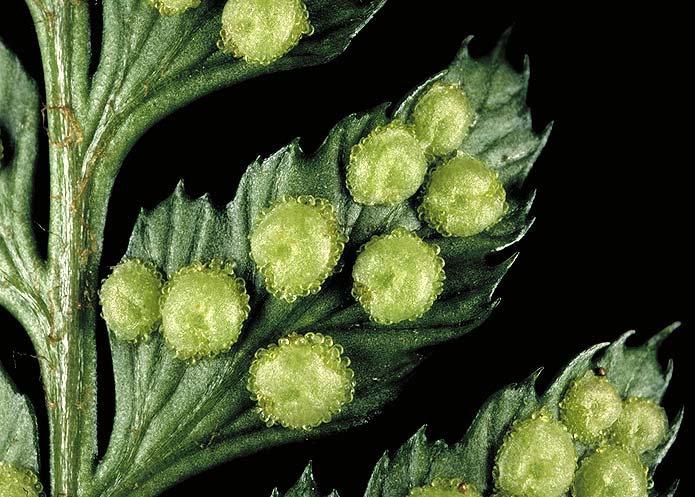| Arachniodes aristata | ||
East Indian holly fern | ||
|
Etymology
Aristata means bearded, or with an awn, like the oats.
Description
Rhizome: long creeping, 1 cm diam., fronds distant, reddish brown scales.
Frond: evergreen, monomorphic, blade/stipe ratio: . Stipe: straw-colored, brown below, sometimes more than 50 cm long in fertile fronds, densely scaly at base, vascular bundles: 4 or more in an arc. Blade: 3-pinnate, actually more divided on the lowest pinna, first pinnule, first segment, and only on mature plants, deltate or pentagonal, glossy, below: hairlike scales. Pinnae: 5 to 10 pair, lowest ones largest, gradually smaller upwards, then abruptly narrowing ; pinnules basal basiscopic of lowest pinnae far larger than second ones; costae grooved above, continuous from rachis to costae to costules; margins creanate, spiny; veins free, forked. Sori: round, between midrib and margin, indusium: reniform, central, sporangia: black. Culture
Habitat: fairly dry floor of mountain forests, usually in zones less than 20 km from coast.
Distribution: Japan, Korea, China, Taiwan, India, SE. Asia generally, through Malesia to Polynesia and New Zealand.
Hardy to -20°C, USDA Zone 6.
Synonyms
Polypodium aristatum G. Forst. Rumohra aristata (G. Forst.) Ching |
|
|
